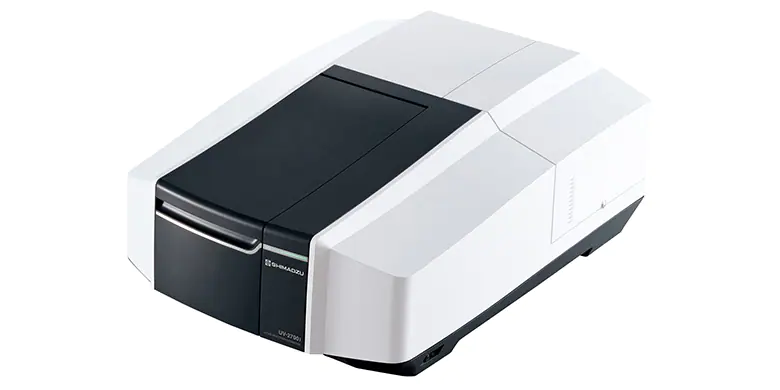How to do UV Calibration As Per USP In Pharma?
Almost every laboratory in the world uses ultraviolet-visible (UV-Vis) spectroscopy as a core analytical technique due to its simplicity and versatility.
To get consistent results from the instrument, it is very important to perform the calibration. Here is how to do UV calibration as per USP in pharmaceuticals we will understand.
UV calibration as per USP is done on five parameters.
- Control of Wavelength
- Control of Absorbance
- Limit of Stray light
- Resolution power
- Baseline Flatness
Control of Wavelength:
- Weigh accurately 1.0 gm of Holmium Oxide and dissolve it in 1.4 M perchloric acid. With the same solvent, make up to 25 ml.
- In the instrument, select the CONTROL OF WAVELENGTH method file.
- Select the file and click the Reference button to correct the baseline.
- Place the Cuvette in the sample cubicle and add 1.4 M perchloric acid.
- After auto-zero, pour the Holmium perchlorate solution into the sample cubicle and press the start button.
- In order to verify the wavelength, scan the solution using Holmium Perchlorate solution absorption maxima.
- Refer to the below table for tolerance;
| Sr. No. | Maxima Wavelength (nm) | Allowable Tolerance (nm) |
| 1 | 241.15 | 240.15 – 242.15 |
| 2 | 287.15 | 286.15 – 288.15 |
| 3 | 361.5 | 360.50 – 362.50 |
| 4 | 536.3 | 533.30 – 539.30 |
Control of Absorbance:
- Dry a quantity of potassium dichromate at 130°C to a constant weight.
- Weigh accurately 60 mg of dried potassium dichromate and dissolve it in 0.005M sulphuric acid. (A)
- Weigh and dissolve exactly 60 mg of potassium dichromate in 0.005M sulphuric acid. Makeup to the 100 ml volume with the same solvent. (B)
- Select the method file as Control of Absornabce in the instrument.
- Fill the Cuvette with 0.005M Sulphuric acid for the blank and place the sample cubicle in both. Press reference to zero.
- Put solution ‘A’ labeled Potassium Dichromate in the sample cubicle after auto zeroing, and then press the start key to take absorbance individually for the first four wavelengths.
- Measure the absorbance at 430 nm for solution ‘B’.
- Calculate the absorbance of Potassium Dichromate solution at different wavelengths. Tolerances are given below.
| Sr. No. | Wavelength (nm) | Absorbance E (1%, 1cm) | Maximum Tolerance |
| 1 | 235 | 124.5 | 122.9 – 126.2 |
| 2 | 257 | 144.0 | 142.8 – 145.7 |
| 3 | 313 | 48.6 | 47.0 – 50.3 |
| 4 | 350 | 106.6 | 104.9 – 108.2 |
| 5 | 430 | 15.9 | 15.7 – 16.1 |
Limit of Stray Light:
- Dry a quantity of potassium dichromate at 130°C to a constant weight.
- Weigh accurately 1.2 gm of dried potassium chloride and dissolve it in 50ml of water.
- Select the method file as Limit of Stray light in the instrument.
- Autozero solution for the baseline correction.
- Using water as a blank check the absorbance of the above solution at 200nm.
- Absorbance should be greater than 2.0
Resolution Power:
- Prepare 0.02% v/v solution of Toluene in Hexane.
- Select the method file as Resolution Power in the instrument.
- Autozero the solution for the baseline correction.
- Use Hexane UV as a blank solution and measure the absorbance at 266 nm and 269 nm of the above solution.
- The ratio of absorbance maxima at 269 nm to that of minima 266 nm should be more than 1.5
Baseline Flatness:
- Select the method file as Baseline Flatness in the instrument.
- Scan the air in absorbance mode.
- The highest and lowest deflections in the absorbance unit are recorded.
- The deflection should be less than 0.01 AU.
This is a procedure for UV calibration as per USP.

Also Read:
- HPLC Calibration parameters in pharma
- pH meter calibration in pharma
- Calibration of Dissolution in pharma
- Calibration of FTIR Spectrophotometer
- KF Interview Questions and answers
Refer YT Channel: Pharmabeej